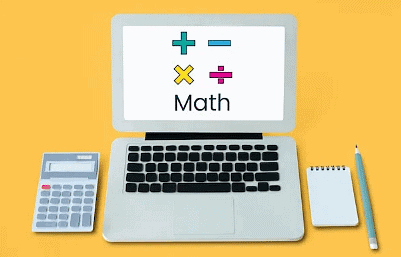Olympiad Notes: Mathematical Operations | Math Olympiad for Class 5 PDF Download
| Table of contents |

|
| Introduction |

|
| Basic Mathematical Operations |

|
| Order of Operations |

|
| Mathematical Expressions |

|
Introduction

Mathematical Operations are fundamental processes in mathematics that involve performing various calculations and manipulations on numbers or mathematical expressions. These operations include addition, subtraction, multiplication, and division. Understanding these operations is crucial for solving mathematical problems and equations.
Basic Mathematical Operations
Let's explore the four basic mathematical operations:
Addition (+):
- Addition is the process of combining two or more numbers to find their total.
- The numbers being added are called "addends," and the result is called the "sum."
- Example: 3 + 4 = 7, where 3 and 4 are the addends, and 7 is the sum.
Subtraction (-):
- Subtraction is the process of finding the difference between two numbers.
- The number from which another number is subtracted is called the "minuend," and the number being subtracted is called the "subtrahend." The result is the "difference."
- Example: 8 - 5 = 3, where 8 is the minuend, 5 is the subtrahend, and 3 is the difference.
Multiplication (×):
- Multiplication is the process of repeated addition. It involves finding the total when a number is added to itself a certain number of times.
- The numbers being multiplied are called "factors," and the result is called the "product."
- Example: 2 × 3 = 6, where 2 and 3 are the factors, and 6 is the product.
Division (÷):
- Division is the process of sharing or partitioning a quantity into equal parts.
- The number being divided is called the "dividend," the number by which it is divided is the "divisor," and the result is the "quotient."
- Example: 12 ÷ 4 = 3, where 12 is the dividend, 4 is the divisor, and 3 is the quotient.
Order of Operations
When performing multiple mathematical operations in a single expression, it's essential to follow the order of operations (PEMDAS/BODMAS):
P: Parentheses (Brackets)
E: Exponents (Orders)
M: Multiplication
D: Division
A: Addition
S: Subtraction
- Parentheses (Brackets): First, solve anything inside parentheses or brackets. These are like small boxes in your math problem. Do what's inside those boxes first.
- Exponents (Orders): Next, if there are any numbers with exponents (like squares or square roots), deal with them. Exponents are like little numbers above and to the right of a bigger number.
- Multiplication and Division: Now, look for multiplication or division. You go from left to right. If you see multiplication (×) or division (÷) symbols, do those calculations in order.
- Addition and Subtraction: Finally, look for addition (+) and subtraction (-). Again, you go from left to right. Do the addition and subtraction calculations in the order you find them.
Mathematical Expressions
Mathematical operations are often used in mathematical expressions and equations to solve real-world problems. Expressions may contain variables, constants, and operations.
Example: Solve for x in the equation: 3x + 5 = 11.
Subtract 5 from both sides to isolate 3x: 3x = 11 - 5 = 6.
Divide both sides by 3 to solve for x: x = 6 ÷ 3 = 2.
|
32 videos|57 docs|45 tests
|
FAQs on Olympiad Notes: Mathematical Operations - Math Olympiad for Class 5
| 1. What are the four basic mathematical operations? |  |
| 2. What is the order of operations in mathematics? |  |
| 3. How do I solve mathematical expressions using the order of operations? |  |
| 4. Can the order of operations ever be changed? |  |
| 5. Why is it important to follow the order of operations in mathematics? |  |

|
Explore Courses for Class 5 exam
|

|

















